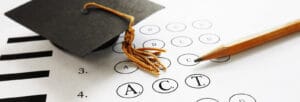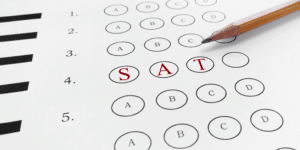Chances are that if you’re taking a standardized test you’ll have to do some reading comprehension. However, it’s important to note that not all reading sections are created equal. The College Board will tell you that the skills you’ll need for the SAT Reading section are things you’ve been doing for years, but that doesn’t mean that you can get your best score by just showing up and pretending you’re in English class. Before we dive into the tips and tricks of this section, let’s take a look at the SAT Reading overview.
The structure of SAT Reading
Reading is the first section of the SAT and it is composed of 52 multiple-choice questions. These are distributed among 5 passages with 10-11 questions per passage. The types of passages you should expect to see are as follows:
- 1 fiction passage
- This passage always comes first, and is, on occasion, an older passage from the 1800s or early 1900s.
- 1 history passage
- This is usually an excerpt from a speech or essay from a key player in US history.
- 1 social science passage
- 2 natural science passages
Some other things to keep in mind:
- Two of the science passages will include one or more figures such as tables, charts, and graphs. There will be a handful of questions that ask about these figures.
- One of the non-fiction passages will be a double passage (AKA two shorter passages provided together with a single set of questions). You will see questions that relate to only the first passage, only the second passage, and to both passages at once.
You will have a total of 65 minutes for this section, which averages out to 13 minutes per passage. However, since the genre and style of the passages varies greatly, many students will find that they spend uneven amounts of time on the different passages, with easier passages taking less time and harder passages taking more time.
The types of questions you’ll see
You’ll find lots of fancy words like Command of Evidence and Analysis in History/Social Studies if you read the College Board’s description of what this section tests. Those kinds of distinctions don’t tell you anything about when and how to approach the questions you’ll encounter though. Instead, we like to split the SAT Reading questions up into three categories: during reading questions, after reading questions, and proof-pairs.
- During reading questions are narrow detail and inference questions that deal with just one part of the passage (be that a sentence or several paragraphs). Many, though not all, of these questions will include line numbers to indicate which part of the passage they are referring to.
- After reading questions are broad questions, such as main idea questions, that will be easier to answer once you’ve read the whole passage. I place the questions relating to charts/graphs/tables in this category too – though some of these questions can easily be answered by just looking at the figure itself, others require you to use what you learned from the passage as well as the figure.
- Proof-pairs are those dreaded double questions. The first question in a proof-pair usually looks like a standard during reading question. The second question, however, will ask you to find evidence from the text that best supports your answer to the previous question. There are generally two sets of proof-pairs per passage (for a total of four questions), though some passages will only have one true proof-pair.
Your next steps
If you’d like a little more help on Reading, or any other section of the SAT, reach out today to learn more about how our experts can help you master the SAT!




